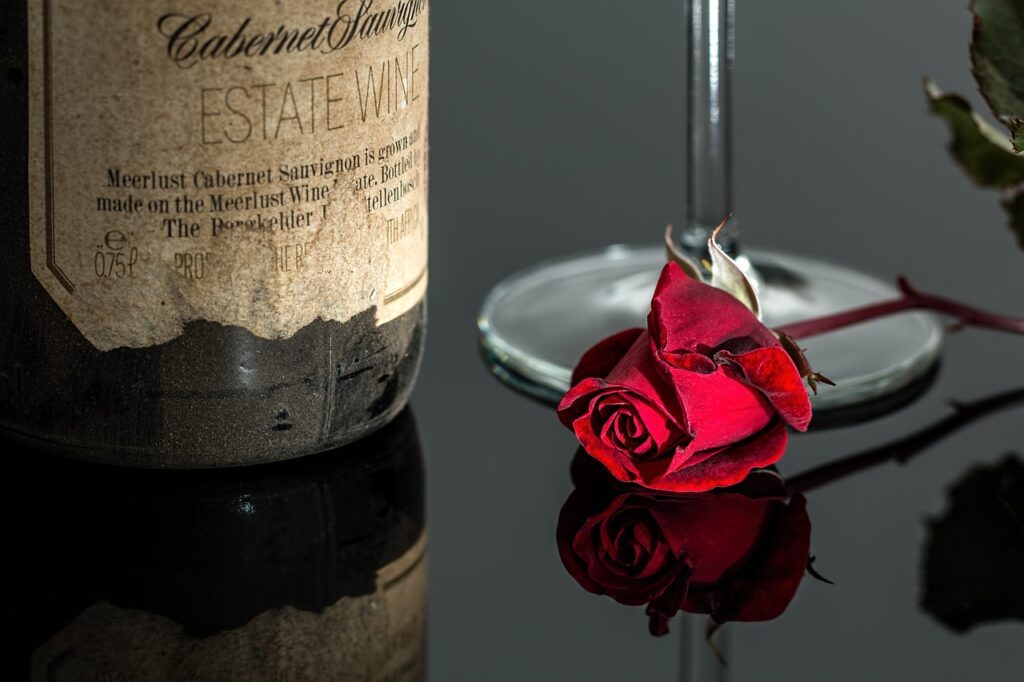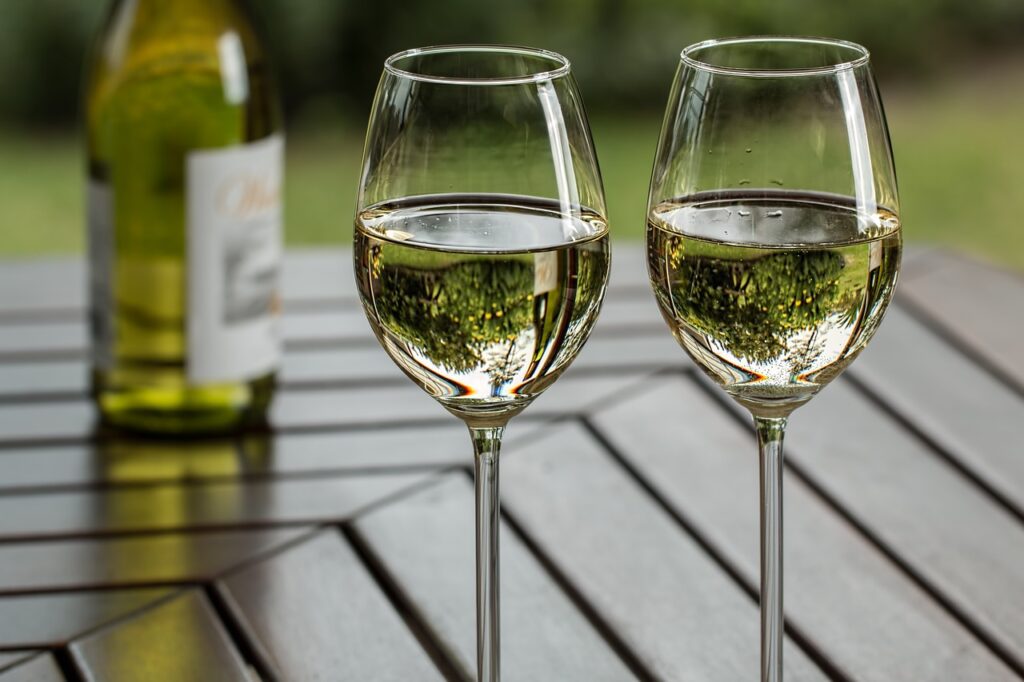Where to Find the Expiration Date on Wine Bottles? Introduction
Understanding wine aging and the expiration date of wine bottles can seem quite perplexing for many wine enthusiasts. The majority of wines do not possess a traditional expiration date like food items, but several aspects can guide consumers regarding the longevity and quality of the wine they purchase. By delving into the significance of aging, storage methods, and labeling, consumers can better appreciate their wine selections and ensure they are at their best.
Importance of Knowing Expiration Dates on Wine Bottles
Even though wines lack a typical expiration date, knowing how long a wine can be kept can significantly impact its taste and quality. Some wines improve as they age, while others may degrade over time. Understanding the aging capabilities of different types of wine allows consumers to make informed decisions for their collection, enhancing their overall drinking experience. Moreover, having insight into the expected longevity of wine fosters trust, readability, and loyalty as consumers engage with wine brands.
How to Identify Expiration Labels on Wine Bottles
For those wines that do include an indication of expiration, the labels may display a vintage year or other coding. Typically, consumers can find this information located on the main body of the label, the neck of the bottle, or even printed on the cap. Scanning these areas for a date or code can provide guidance on whether the wine maintains its quality. When purchasing wine, it is wise to check for such details to assure optimal taste and enjoyment. By recognizing these labeling elements, wine lovers can enhance their overall appreciation for this dynamic and evolving beverage.

Expiration Date on Wine Labels
Understanding Date Formats on Wine Labels
For those interested in the lifespan of wine, understanding the date formats on wine labels is crucial. While traditional expiration dates may not be commonplace, many wine bottles display the vintage year, which signifies when the grapes were harvested. This vintage date serves as a useful reference point for consumers, indicating the potential aging ability of the wine. It’s important to note that not all wines are created equal; some wines are made to be enjoyed young, while others can benefit from several years of aging. Moreover, some manufacturers may provide a “drink by” recommendation that can also be key to determining when to enjoy the wine at peak flavor.
Tips for Reading and Interpreting Expiration Dates on Labels
When examining wine labels for potential expiration dates or any other relevant dates, wine enthusiasts should focus on specific tips. Always check the main body of the label, as many producers incorporate vintage information here. Additionally, examining the neck of the bottle or the cap is advisable, as some details may be printed in those areas. If a consumer spots a code or a combination of letters and numbers, researching the specific winery can often yield valuable insights regarding that particular wine’s best drinking window.
Lastly, consulting resources such as wine apps or specific websites dedicated to wine ratings can offer further information on how long a wine should be aged before consumption. By utilizing these strategies, wine drinkers can enjoy their wine at its finest and make informed choices regarding their selections.

Location on the Base of the Wine Bottle
What to Look for on the Bottom of the Bottle
When searching for expiration dates on wine, consumers should pay careful attention to the base of the wine bottle. This area may contain information that is not readily visible when the bottle is upright. To ensure one does not miss any important details, it is advised to hold the bottle at an angle to inspect the base thoroughly. In some cases, manufacturers print expiration codes or production dates on the bottom, making this a crucial area for wine drinkers to examine.
How Expiration Dates Are Stamped or Printed on the Base
Expiration dates, if present, may be stamped or printed on the base of the wine bottle using various methods. Some producers might opt for simple ink printing, while others may use foil or embossed designs that can add a touch of elegance. The format of these codes varies among wineries, so understanding the specific markings will help consumers decipher the information accurately.
In some instances, the stamping may include a combination of letters and numbers that correspond to the production date or a suggested expiration period. Familiarizing oneself with these coding systems can further assist wine lovers in determining the appropriate timing for consumption. By being vigilant about the details on the base of the wine bottle, it enables them to appreciate their selection fully while ensuring they enjoy it at the optimal time.
Consumers can also benefit from keeping notes about specific wines they have sampled, including their best drinking periods, contributing to a more knowledgeable and enjoyable wine experience.
Check the Neck of the Bottle
Examining the Neck Label for Expiration Information
In addition to the base of the bottle, wine enthusiasts should also check the neck of the bottle for any expiration information. The neck label is usually a narrower section that may have essential details about the wine. Consumers should inspect both the front and back sides of the neck to see if there’s an indication of an expiration date or any related codes. This part of the bottle is often overlooked, but it can be crucial for understanding the wine’s timeline.
Common Practices for Displaying Expiration Dates on Neck Labels
When it comes to displaying expiration dates, different wineries may follow distinct practices. Some producers may choose to print the expiration date directly on the neck label, while others might include this information as part of a unique design element. This date may be outlined in a smaller font or incorporated into a graphical design, making it somewhat challenging to spot.
It’s not uncommon for some wineries to rely on a more generalized aging recommendation rather than strict expiration dates, advising consumers to enjoy the wine within a specific time frame following the bottling date. These best practices encourage consumers to look at both the neck and the label for clearer guidelines.
Ultimately, if one fails to find an expiration date on the neck or base of the bottle, it’s essential not to panic. Many wines do not have strict expiration dates, and their drinkability often depends on the type and storage conditions. Following the best practices highlighted here will enhance the overall wine experience and ensure that consumers enjoy their choices at the right time. Regular assessment and familiarity with various producers will significantly enhance wine lovers’ appreciation and enjoyment of their selections.

Under the Cap of the Bottle
Insider Tips for Finding Expiration Dates Under the Cap
Wine aficionados should also consider inspecting the cap of the bottle for any potential expiration information. The caps on wine bottles, particularly for screw-top varieties, can occasionally carry important details that consumers might overlook. It’s advisable to gently remove the cap and examine the inner side for any codes or expiration dates. Some wineries use discreet printing techniques that might require careful scrutiny to discern. Additionally, it’s essential for wine drinkers to understand that not all wines will have an expiration date under the cap, but being thorough in the search can yield helpful insights about the wine’s longevity.
Ensuring the Authenticity of the Expiration Information
When consumers do spot an expiration date, they should verify its authenticity. The credibility of the expiration information can sometimes vary among wineries. A recognized producer is likely to provide reliable details, while lesser-known brands may not adhere to consistent labeling practices. Therefore, it is wise for wine enthusiasts to cross-check this information against the winery’s official communication or website to confirm the suggested timelines.
In practice, wine drinkers should also consider the overall quality and storage conditions of the bottle, as these factors significantly influence the wine’s flavor and safety beyond the printed expiration date. Being vigilant and maintaining an informed perspective will serve wine lovers well, ensuring they enjoy their selections at optimal times.
Overall, while searching for expiration information on wine bottles may seem daunting, a careful check of the neck, base, and cap can guide consumers in making educated decisions regarding their wine selections and enhance their overall drinking experience.
Importance of Following Expiration Dates
Impact of Consuming Expired Wine
When wine enthusiasts ignore expiration dates, they risk consuming wine that has deteriorated in quality. This can result not only in an unpleasant taste but also possible health issues. Wines can spoil due to oxidation, which can occur even before the printed expiration date if left improperly stored or opened for too long. Consuming bad wine may lead to digestive discomfort and other health hazards, primarily due to the growth of harmful bacteria. Therefore, adhering to expiration guidelines is essential for both enjoyment and safety.
Benefits of Enjoying Wine Before Expiration
Drinking wine before its expiration date ensures that consumers experience the optimal flavor and aroma, which are key qualities of a good wine. Fresh wine brings out the unique characteristics of its grapes, enhancing the overall tasting experience. Enjoying wine within its ideal timeframe allows drinkers to savor the complexity of flavors that the winemaker intended. Moreover, a well-timed consumption can also elevate social occasions, making gatherings and celebrations even more special with delightful wine pairings.
Wine lovers are encouraged to develop a routine of checking expiration dates to ensure they maximize their enjoyment. Proper storage practices can extend the freshness of unopened bottles, allowing for a more prolonged enjoyment period. Ultimately, staying informed about expiration guidelines can deepen one’s appreciation of wine and enhance the overall experience of this celebrated beverage, fostering a more satisfying relationship with each bottle. By keeping these factors in mind, wine aficionados can ensure that every sip is enjoyed at its best.

Storage and Shelf Life Considerations
How Storage Affects the Expiration of Wine
One important aspect of wine longevity is how it is stored. The ideal storage temperature for wine is between 45-65°F (7-18°C). If wine is subjected to excessive heat or rapid temperature fluctuations, it can age prematurely and lose its desirable characteristics. Additionally, exposure to direct sunlight can also be detrimental, causing oxidation and spoiling delicate flavors. Wine should be kept in a cool, dark place, away from any light sources. Proper humidity levels are also crucial, ideally around 70%. This humidity helps maintain the integrity of corks, preventing them from drying out, which could result in air leaks and spoilage. By paying attention to these storage conditions, wine lovers can greatly influence the shelf life of their collections.
Extending the Shelf Life of Your Wine Collection
To extend the longevity of wine, enthusiasts should adopt several best practices. First, keeping the bottles lying on their sides in a horizontal position helps keep the cork moist, ensuring an airtight seal. It is also advisable to avoid frequent movement of the bottles, as vibrations can disturb the sediment and affect the flavor profile.
For those wanting to preserve certain bottles over time, investing in a dedicated wine refrigerator may be beneficial. These units maintain a consistent temperature and humidity level, ideal for preserving wines. Finally, consumers should be cautious about opening bottles prematurely. Once opened, wine should be consumed within a few days for the best taste, as exposure to air accelerates spoilage.
By implementing these storage strategies, wine enthusiasts can enhance their tasting experiences and enjoy their selections at their prime for years to come.
Conclusion
Summary of Key Points
In summary, understanding the expiration dates on wine bottles is essential for any wine enthusiast. The expiration date, when present, can typically be found on the label, cap, or even the neck of the bottle. Wine that has been opened should be refrigerated and consumed promptly to maintain optimal flavor and quality. Proper storage techniques, such as keeping the wine in a cool and dark place, can significantly extend the wine’s shelf life. Furthermore, lying bottles on their sides and minimizing movement will help ensure a tight seal and prevent sediment disturbance.
Final Thoughts on Finding and Understanding Expiration Dates on Wine Bottles
Ultimately, wine lovers should become familiar with reading and interpreting expiration dates to enhance their experience. By being vigilant about storage conditions and recognizing the importance of consumption timelines, wine enthusiasts can better appreciate their collections. No one wants to inadvertently sip on spoiled wine, so taking the time to check expiration dates can ensure that every glass enjoyed is a delightful one.
While some wines can improve with age, others are best savored fresh. Understanding these dynamics allows consumers to make informed choices and maximize their enjoyment. Therefore, whether a collector or an occasional drinker, being mindful of the crucial details surrounding wine expiration can lead to more gratifying tasting experiences. With the right knowledge, managing a wine collection can become an enjoyable and rewarding venture.

We are introducing Alberto Wilson, the content owner at South Avenue Bar! 🍹🍻Join us at South Avenue Bar, a modern establishment boasting an impressive cocktail menu and a vibrant atmosphere. For those who prefer a classic brew, we also offer a delightful selection of draft beers, poured just right to ensure a perfect pint every time.
Immerse yourself in the rhythms of Latin music during our weekly Latino night, where you can sip on refreshing margaritas and mojitos while enjoying the vibrant beats. Indulge in our delectable Greek tapas, featuring mouthwatering olives and other delightful small bites that perfectly complement your drink of choice.
Whether you’re seeking an exquisite cocktail experience or a laid-back evening with your favorite beer, South Avenue Bar, under the guidance of Alberto Wilson, promises a memorable and delicious journey through the world of libations. Come and join us today! 🍸🎉
